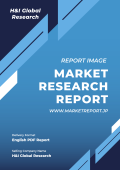1.Research Methodology
1.1.Desk Research
1.2.Real time insights and validation
1.3.Forecast model
1.4.Assumptions and forecast parameters
1.5.Market size estimation
1.5.1.Top-down approach
1.5.2.Bottom-up approach
2.Report Scope
2.1.Market definition
2.2.Key objectives of the study
2.3.Report overview
2.4.Market segmentation
2.5.Overview of the impact of COVID-19 on global traumatic brain injuries assessment market
3.Executive Summary
4.Market Overview
4.1.Introduction
4.2.Growth impact forces
4.2.1.Drivers
4.2.2.Restraints
4.2.3.Opportunities
4.3.Market value chain analysis
4.3.1.List of raw material suppliers
4.3.2.List of manufacturers
4.3.3.List of distributors
4.4.Innovation & sustainability matrices
4.4.1.Technology matrix
4.4.2.Regulatory matrix
4.5.Porter’s five forces analysis
4.5.1.Bargaining power of suppliers
4.5.2.Bargaining power of consumers
4.5.3.Threat of substitutes
4.5.4.Threat of new entrants
4.5.5.Competitive rivalry intensity
4.6.PESTLE analysis
4.6.1.Political
4.6.2.Economical
4.6.3.Social
4.6.4.Technological
4.6.5.Environmental
4.7.Impact of COVID-19 on traumatic brain injuries assessment market
4.7.1.Pre-covid market scenario
4.7.2.Post-covid market scenario
5.Traumatic Brain Injuries Assessment Market Analysis, by End-User
5.1.Overview
5.2.Hospital
5.2.1.Definition, key trends, growth factors, and opportunities
5.2.2.Market size analysis, by region
5.2.3.Market share analysis, by country
5.3.Diagnostics Center
5.3.1.Definition, key trends, growth factors, and opportunities
5.3.2.Market size analysis, by region
5.3.3.Market share analysis, by country
5.4.Others
5.4.1.Definition, key trends, growth factors, and opportunities
5.4.2.Market size analysis, by region
5.4.3.Market share analysis, by country
5.5.Research Dive Exclusive Insights
5.5.1.Market attractiveness
5.5.2.Competition heatmap
6.Traumatic Brain Injuries Assessment Market Analysis, by Diagnostic Type
6.1.CT-Scan
6.1.1.Definition, key trends, growth factors, and opportunities
6.1.2.Market size analysis, by region
6.1.3.Market share analysis, by country
6.2.MRI
6.2.1.Definition, key trends, growth factors, and opportunities
6.2.2.Market size analysis, by region
6.2.3.Market share analysis, by country
6.3.Intracranial Pressure Monitoring
6.3.1.Definition, key trends, growth factors, and opportunities
6.3.2.Market size analysis, by region
6.3.3.Market share analysis, by country
6.4.Partial Pressure of Oxygen in Brain Tissue (pBrO2)
6.4.1.Definition, key trends, growth factors, and opportunities
6.4.2.Market size analysis, by region
6.4.3.Market share analysis, by country
6.5.Others
6.5.1.Definition, key trends, growth factors, and opportunities
6.5.2.Market size analysis, by region
6.5.3.Market share analysis, by country
6.6.Research Dive Exclusive Insights
6.6.1.Market attractiveness
6.6.2.Competition heatmap
7.Traumatic Brain Injuries Assessment Market, by Region
7.1.North America
7.1.1.U.S.
7.1.1.1.Market size analysis, by End-User
7.1.1.2.Market size analysis, by Diagnostic type
7.1.2.Canada
7.1.2.1.Market size analysis, by End-User
7.1.2.2.Market size analysis, by Diagnostic type
7.1.3.Mexico
7.1.3.1.Market size analysis, by End-User
7.1.3.2.Market size analysis, by Diagnostic type
7.1.4.Research Dive Exclusive Insights
7.1.4.1.Market attractiveness
7.1.4.2.Competition heatmap
7.2.Europe
7.2.1.Germany
7.2.1.1.Market size analysis, by End-User
7.2.1.2.Market size analysis, by Diagnostic type
7.2.2.UK
7.2.2.1.Market size analysis, by End-User
7.2.2.2.Market size analysis, by Diagnostic type
7.2.3.France
7.2.3.1.Market size analysis, by End-User
7.2.3.2.Market size analysis, by Diagnostic type
7.2.4.Spain
7.2.4.1.Market size analysis, by End-User
7.2.4.2.Market size analysis, by Diagnostic type
7.2.5.Italy
7.2.5.1.Market size analysis, by End-User
7.2.5.2.Market size analysis, by Diagnostic type
7.2.6.Rest of Europe
7.2.6.1.Market size analysis, by End-User
7.2.6.2.Market size analysis, by Diagnostic type
7.2.7.Research Dive Exclusive Insights
7.2.7.1.Market attractiveness
7.2.7.2.Competition heatmap
7.3.Asia Pacific
7.3.1.China
7.3.1.1.Market size analysis, by End-User
7.3.1.2.Market size analysis, by Diagnostic type
7.3.2.Japan
7.3.2.1.Market size analysis, by End-User
7.3.2.2.Market size analysis, by Diagnostic type
7.3.3.India
7.3.3.1.Market size analysis, by End-User
7.3.3.2.Market size analysis, by Diagnostic type
7.3.4.Australia
7.3.4.1.Market size analysis, by End-User
7.3.4.2.Market size analysis, by Diagnostic type
7.3.5.South Korea
7.3.5.1.Market size analysis, by End-User
7.3.5.2.Market size analysis, by Diagnostic type
7.3.6.Rest of Asia Pacific
7.3.6.1.Market size analysis, by End-User
7.3.6.2.Market size analysis, by Diagnostic type
7.3.7.Research Dive Exclusive Insights
7.3.7.1.Market attractiveness
7.3.7.2.Competition heatmap
7.4.LAMEA
7.4.1.Brazil
7.4.1.1.Market size analysis, by End-User
7.4.1.2.Market size analysis, by Diagnostic type
7.4.2.Saudi Arabia
7.4.2.1.Market size analysis, by End-User
7.4.2.2.Market size analysis, by Diagnostic type
7.4.3.UAE
7.4.3.1.Market size analysis, by End-User
7.4.3.2.Market size analysis, by Diagnostic type
7.4.4.South Africa
7.4.4.1.Market size analysis, by End-User
7.4.4.2.Market size analysis, by Diagnostic type
7.4.5.Rest of LAMEA
7.4.5.1.Market size analysis, by End-User
7.4.5.2.Market size analysis, by Diagnostic type
7.4.6.Research Dive Exclusive Insights
7.4.6.1.Market attractiveness
7.4.6.2.Competition heatmap
8.Competitive Landscape
8.1.Top winning strategies, 2021
8.1.1.By strategy
8.1.2.By year
8.2.Strategic overview
8.3.Market share analysis, 2021
9.Company Profiles
9.1.Integra Life science
9.1.1.Overview
9.1.2.Business segments
9.1.3.Product portfolio
9.1.4.Financial performance
9.1.5.Recent developments
9.1.6.SWOT analysis
9.2.Bio Direction, Inc.
9.2.1.Overview
9.2.2.Business segments
9.2.3.Product portfolio
9.2.4.Financial performance
9.2.5.Recent developments
9.2.6.SWOT analysis
9.3.Nihon Kohden Corp.
9.3.1.Overview
9.3.2.Business segments
9.3.3.Product portfolio
9.3.4.Financial performance
9.3.5.Recent developments
9.3.6.SWOT analysis
9.4.Comp medics Ltd.
9.4.1.Overview
9.4.2.Business segments
9.4.3.Product portfolio
9.4.4.Financial performance
9.4.5.Recent developments
9.4.6.SWOT analysis
9.5.InfraScan, Inc.
9.5.1.Overview
9.5.2.Business segments
9.5.3.Product portfolio
9.5.4.Financial performance
9.5.5.Recent developments
9.5.6.SWOT analysis
9.6.Oculogica
9.6.1.Overview
9.6.2.Business segments
9.6.3.Product portfolio
9.6.4.Financial performance
9.6.5.Recent developments
9.6.6.SWOT analysis
9.7.Raumedic AG
9.7.1.Overview
9.7.2.Business segments
9.7.3.Product portfolio
9.7.4.Financial performance
9.7.5.Recent developments
9.7.6.SWOT analysis
9.8.Koninklijke Philips N.V,
9.8.1.Overview
9.8.2.Business segments
9.8.3.Product portfolio
9.8.4.Financial performance
9.8.5.Recent developments
9.8.6.SWOT analysis
9.9.Boston Scientific Corporation,
9.9.1.Overview
9.9.2.Business segments
9.9.3.Product portfolio
9.9.4.Financial performance
9.9.5.Recent developments
9.9.6.SWOT analysis
9.10.Elekta
9.10.1.Overview
9.10.2.Business segments
9.10.3.Product portfolio
9.10.4.Financial performance
9.10.5.Recent developments
9.10.6.SWOT analysis
10.Appendix
10.1.Parent & peer market analysis
10.2.Premium insights from industry experts
10.3.Related reports











